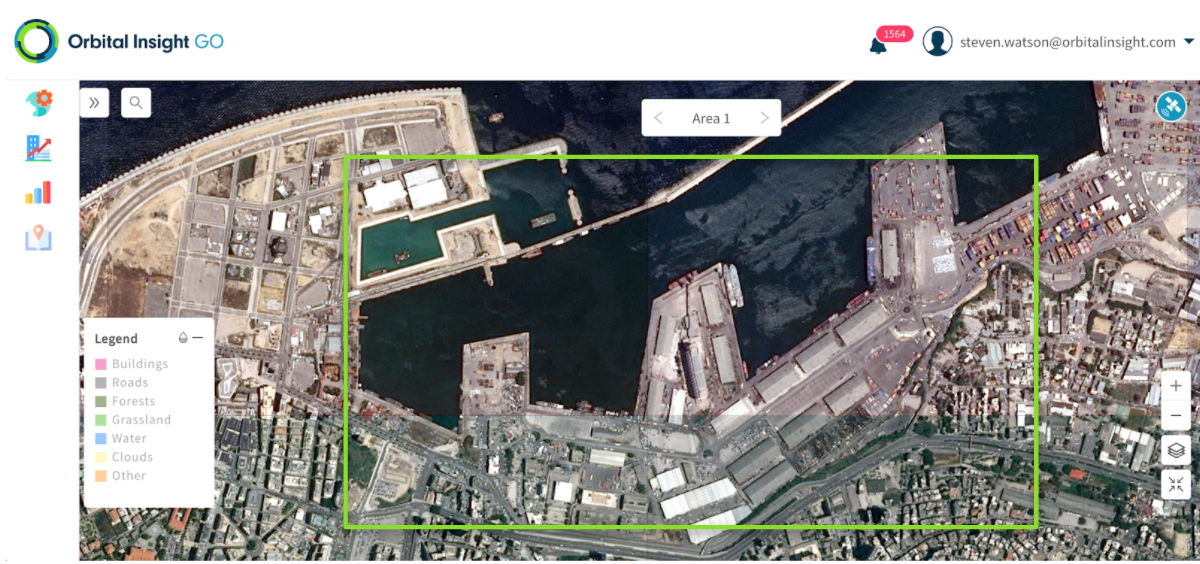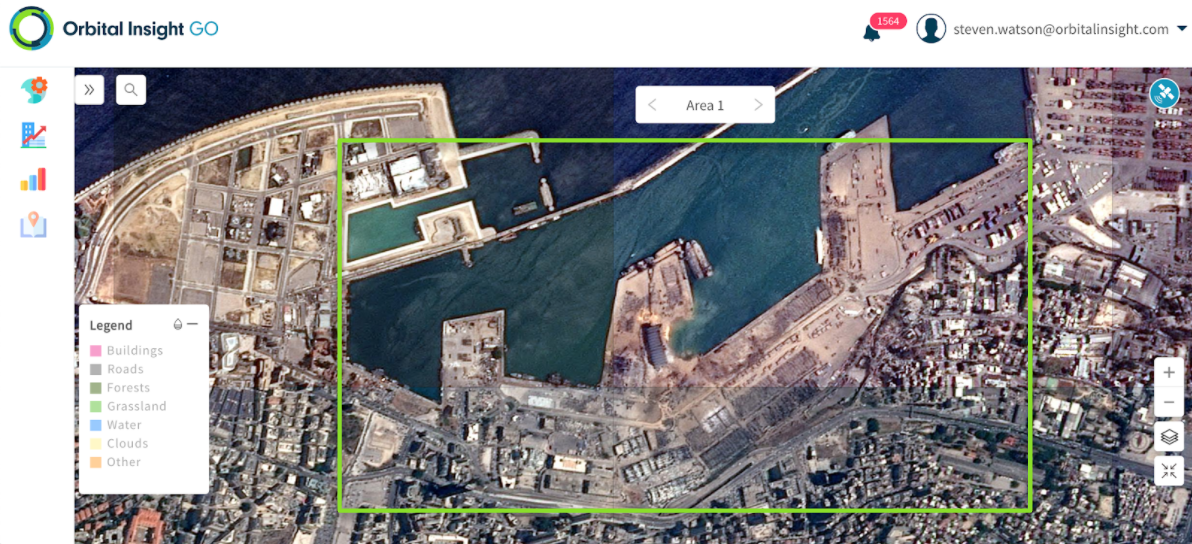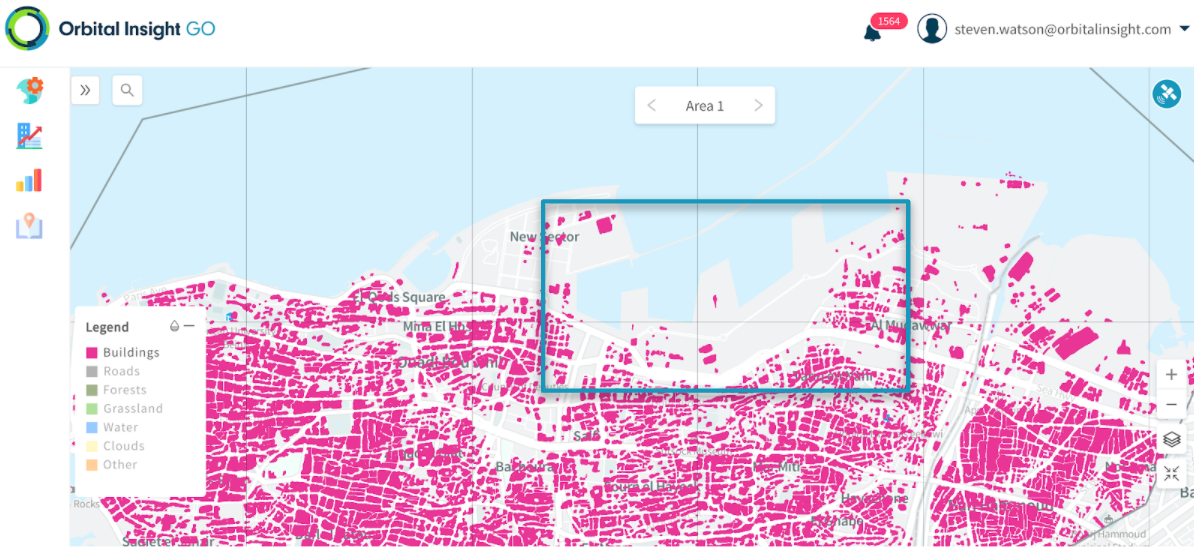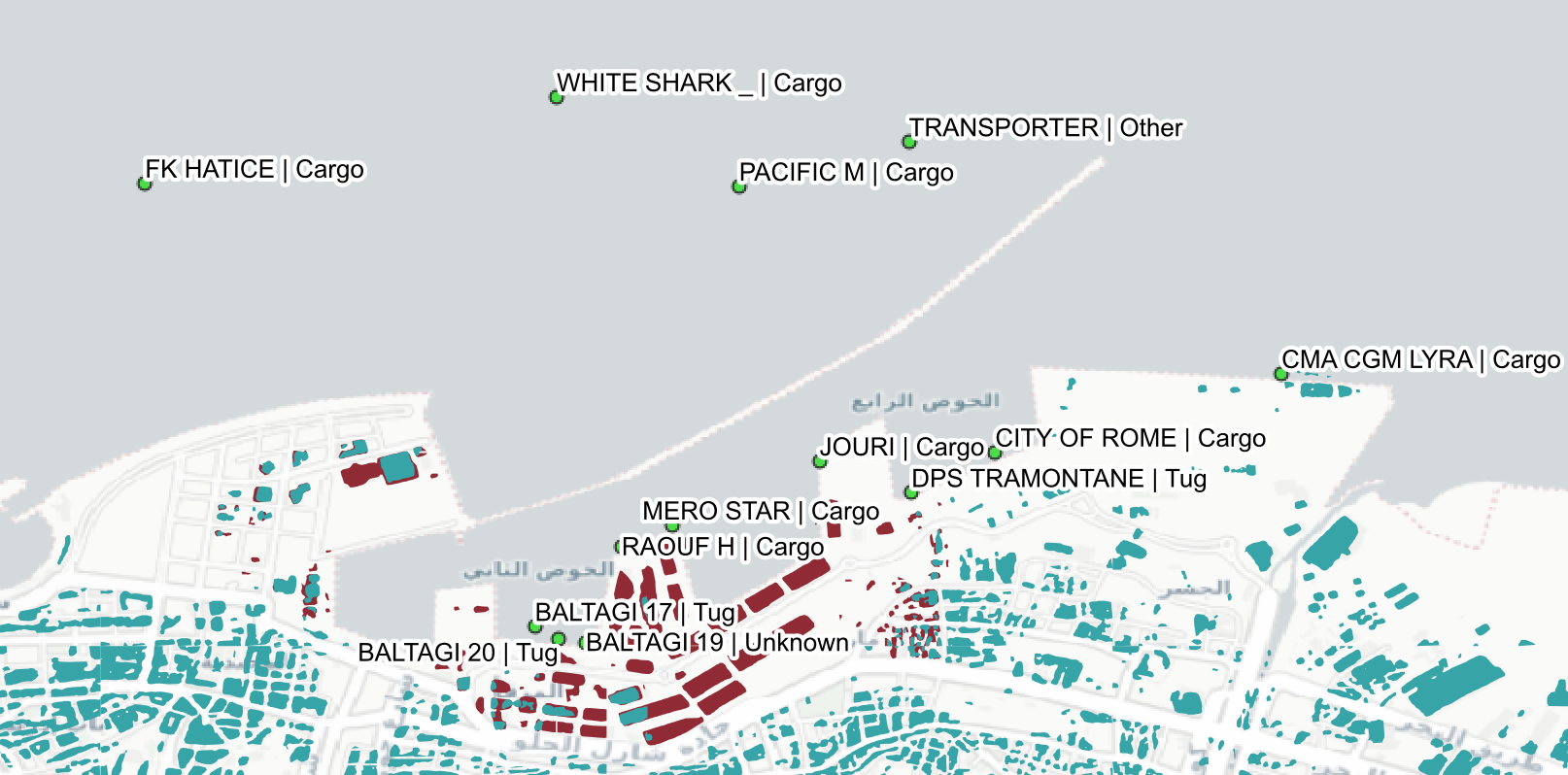
Tragedy in Beirut
At least 135 people were killed and 5,000 wounded as of August, 5 2020 (5:20 pm EST), in the Beirut explosion. With hundreds reported missing and a lack of clarity regarding the cause of the explosion, geospatial analytics helps government analysts, NGOs, and first responders gain critical visibility into the catastrophe and have the potential to save lives.
Gaining Immediate Visibility with Satellite Imagery
Our health, safety and security depend on governments and NGOs maintaining an accurate picture of the world. However, current sources of information about what’s happening on and to the Earth are often incomplete, outdated and analyzed manually. Orbital Insight helps organizations like the U.S. Air Force, Department of Defense, Defense Innovation Unit and The World Bank zoom in on the physical world to detect anomalies, prevent surprises and respond with the right security policies, communications and aid.
We applied our commercial technology to rapidly identify granular infrastructure change resulting from the explosion to support humanitarian efforts. By analyzing today’s Airbus 1.5m resolution SPOT imagery with Orbital Insight’s land use algorithms, we analyzed over 180,000m2 within a matter of minutes.

Airbus SPOT Satellite Imagery from May 2020

Airbus SPOT Satellite Imagery from August 2020
From Imagery to Analytics
Satellite imagery is a powerful tool in providing real-time answers and qualitative information into global change, however, imagery analysis is a timely and manual process. Our computer vision algorithms are purpose-built for automatically and accurately identifying various changes in land-use at scale, such as buildings, roads, forests, and water.

Orbital Insight Land Use Classification of Beirut - May 2020

Orbital Insight Land Use Classification of Beirut - August 2020
Quantifying the Damage
Overlaying computer vision results from May and August show exactly which structures were destroyed in the explosion in one single image. Blue indicates remaining structures, while red indicates the specific buildings destroyed in a single view.
In this instance, where the location of the disaster was widely reported, our technology was useful in rapidly confirming and quantifying the damage it caused. However, this same approach could also be used in less-documented cases, without as much corroborating information, in order to find similar on the ground changes over a wide-area in a search/discovery capacity.

Orbital Insight Infrastructure Change from May to August 2020 (red indicates structures destroyed, blue indicates structures remaining)
Potential Loss of Vessel and Cargo Loss
Orbital Insight’s AIS analytics also allows us to layer additional data sources that give insight into maritime activity and shipping. This vessel transponder data is primarily used for safety and navigation, but also provides high-frequency signals into port activity, including cargo shipments and commodity movements. At the time of the explosion, Orbital Insight identified several cargo vessels in the port, proximate to the blast radius. Insurance companies will require such data when conducting their claims investigations.
The labels below indicate the ship’s position, name, and reported vessel type.

Beirut Vessel Traffic Identified though AIS Geospatial Analysis
To learn more about the data behind this article and what Orbital Insight has to offer, visit https://orbitalinsight.com/.







Sign up to receive our stories in your inbox.
Data is changing the speed of business. Investors, Corporations, and Governments are buying new, differentiated data to gain visibility make better decisions. Don't fall behind. Let us help.













Sign up to receive our stories in your inbox.
Data is changing the speed of business. Investors, Corporations, and Governments are buying new, differentiated data to gain visibility make better decisions. Don't fall behind. Let us help.





